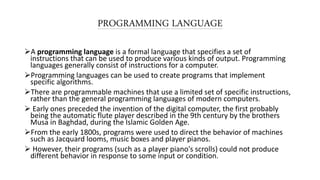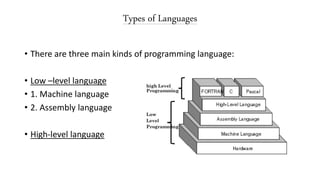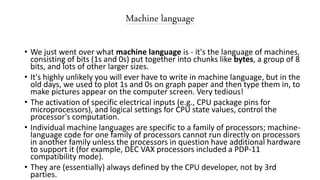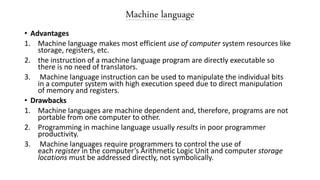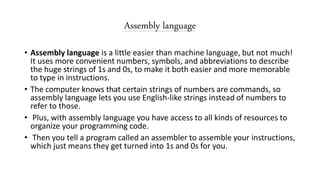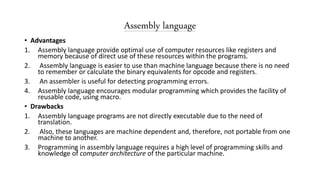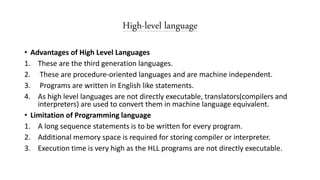The document discusses different types of programming languages: machine language uses binary; assembly language uses symbols but still maps to binary; and high-level languages are abstracted from hardware and use English-like syntax. It provides details on each type, including their advantages like efficiency for machine language or readability for high-level languages, and disadvantages like lack of portability or required translation.

